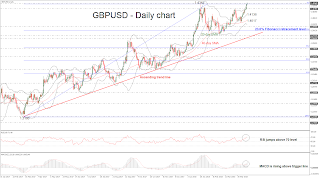Pivot points have long been used by Forex traders as a means of determining directional changes in the markets.
Pivot points are calculated levels within the market that provide both potential support and resistance levels and also a leading indication as to which way the market might be heading.
The generally held view is that if the market trades above the pivot point, it is seen as having bullish sentiment. Conversely if the market trades below the pivot point it is seen as having bearish sentiment.
As well as providing the actual pivot point, the calculations also provide immediate support and resistance levels in the market known as ‘pivot levels’. These are projections of points where the market may slow up or reverse. Three levels of resistance are calculated above the pivot point as well as three levels of support below the pivot point. These are commonly referred to as R1, R2, R3 and S1, S2, S3.
Calculations for pivot levels are made from the open, high, low and close prices of a currency pair over a selected time period. These calculations can be made for daily, weekly or even monthly charts.
Pivot points are popular among traders as unlike many technical indicators they are considered a leading rather than a lagging indicator. This is because they signal potential levels of support and resistance in advance of the market reaching these levels.
With many traders using and reacting to pivot points there is a natural tendency for markets to respond to these levels. It is therefore beneficial to maintain an awareness of these pivot levels even if your current strategy relies on separate indicators for defining trade entry and exit points.
Calculating Pivot Points
The calculation of the levels is fairly straightforward. We include the calculation below for those who are interested in calculating their own levels.
To calculate the pivot point on a chosen timeframe you will need the open, high, low and close prices for the currency pair over the selected timeframe. The calculation is as follows:
- Resistance level 3 (R3) = HIGH + 2 * (Pivot - Low)
- Resistance 2 (R2) = PIVOT + (R1 - S1)
- Resistance 1 (R1) = 2 * PIVOT - Low
- Pivot Point (PP) = ( HIGH + CLOSE + LOW ) / 3
- Support 1 (S1) = 2 * PIVOT - HIGH
- Support 2 (S2) = PIVOT - (R1 - S1)
- Support 3 (S3) = LOW - 2*(High - Pivot)
The three most important pivot points are R1, S1 and the actual pivot point.
Alternatively many sites provide pre-calculated pivots for the major Forex pairs. You can of course generate your own levels by using a
pivot point calculator.
Trading with Pivot Points
The basic idea behind pivot point trading is to use a move towards or break of R1 or S1 as an entry point. As the market reaches R2, R3 or S2, S3 it is likely to become increasingly overbought or oversold. These levels are then used as the exit points for the trade.
For example the market is just above the pivot point. Here your initial profit target would be set as R1 with a stop loss placed just below the pivot point. A break of this level would see R2 set up as the next profit target with the stop moved up to just below R1. If R2 is broke then so R3 becomes the new target and the stop is moved to below R2.
The same is true in reverse for short trades, remembering to move the stop loss behind the previous price target as each level is breached.
This approach is particularly suitable for breakouts type trades but it is also possible to successfully trade market pullbacks that occur between the levels.
For example if you identify the trend as ‘long’ and the market pulls back towards S1, you could then enter a trade with a stop just below S1 and an initial profit target of the PP.
While pivot points do not always work as precisely as we have seen here they are useful tool to add to your toolbox. They help to highlight areas of possible support and resistance in the market and can be successfully combined with other technical indicators to help validate trading setups.




